Social media moves fast, but Twitter, now called X, continues to be one of the best platforms for businesses looking to connect with audiences, build brand awareness, and drive real conversations.
Whether you’re a creator trying to monetize your Twitter account or a business owner hoping to boost visibility, using Twitter for business can be a game-changer when done right.
In this complete guide, you’ll learn how to set up and use X for your business, how to create a Twitter strategy that works, and the best practices for turning followers into loyal customers.
A Complete Guide to (X) Twitter for Business
When you think of business marketing, platforms like Instagram or LinkedIn may come to mind first. But Twitter (X) offers something those platforms can’t: real-time engagement.
It’s where trends are born, news breaks, and brands have direct conversations with customers.
This guide will cover everything from setting up your business account to building a winning strategy, responding to customers, using automation tools, and tracking performance.
If you’re ready to learn how to make Twitter work for your brand, let’s dive in.
Why Use (X) Twitter for Business?
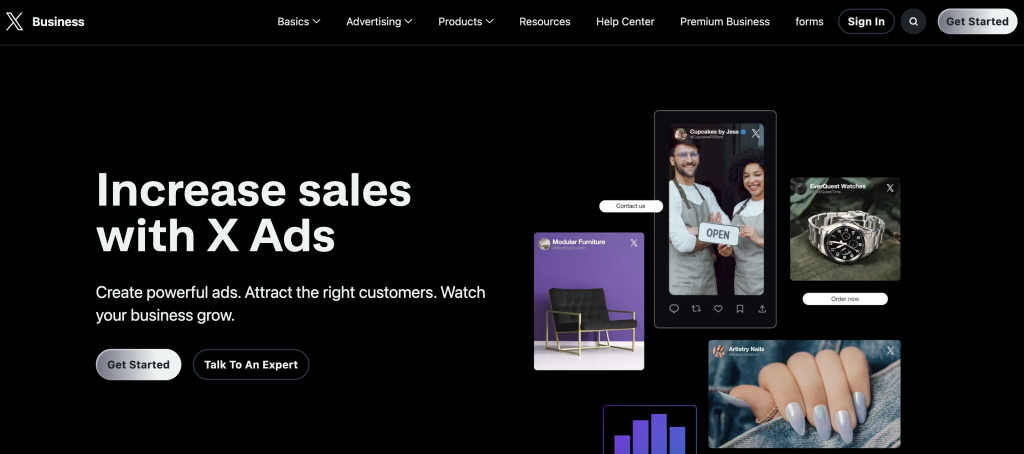
There are countless reasons why businesses large and small use Twitter as part of their marketing and customer experience strategy. Here are a few of the biggest benefits:
- Real-time communication – You can instantly engage with customers, respond to issues, and join trending conversations as they happen.
- Brand visibility – With over 300 million active users, Twitter is still a top discovery platform for new audiences.
- Lead generation – A well-optimized business account can attract potential clients, collaborators, and loyal fans.
- Networking opportunities – Twitter is full of thought leaders, influencers, and communities that can help you grow your business presence.
- Customer support – Many users prefer reaching out to brands via Twitter instead of email or phone.
Simply put, if your business wants to be part of the global conversation, Twitter is the place to do it.
How to Create a X (Twitter) for Business Account
Setting up your Twitter for Business account only takes a few minutes. Here’s a quick step-by-step guide:
- Go to X.com and click “Create Account.”
- Enter your business name, email, and password. Use a business email, not a personal one.
- Choose your username (handle). Ideally, it should match your brand name or something close to it for consistency.
- Upload a professional profile photo. Use your logo or brand mascot.
- Write a compelling bio. Clearly explain what your business does and include a link to your website.
- Add your location and header image. These make your profile look more credible and visually appealing.
- Switch to a professional account. In settings, select “Premium” to access Twitter analytics, ads, and business-specific features at a monthly or yearly cost.
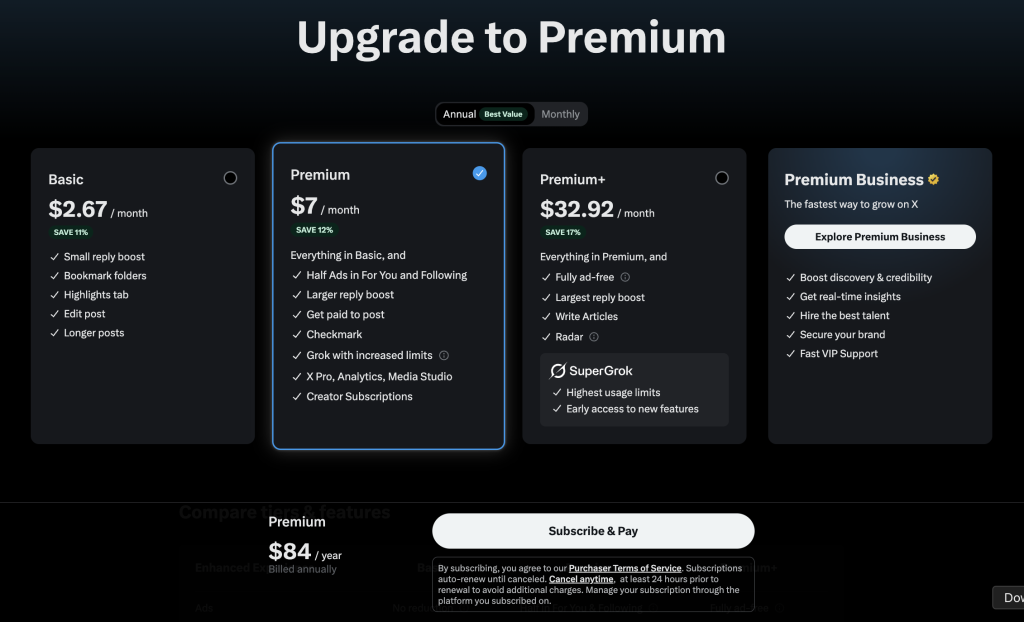
Once your account is ready, it’s time to plan your strategy.
How to Use X/Twitter for Business
Using X for business is more than just tweeting every now and then. It’s about creating a consistent, strategic approach to communication, branding, and engagement. When you learn how to use Twitter the right way, you set yourself up for success as a business.
Let’s go over the key steps to building a strong presence.
1. Create Your Twitter CX Strategy for Your Business
Every business needs a customer experience (CX) strategy on Twitter. This means defining how you’ll interact with your audience, from marketing to customer service.
Start by identifying your goals. Are you using Twitter to drive website traffic, boost brand awareness, or handle customer support? Then, create guidelines for tone, response time, and how to deal with complaints or praise.
Your CX strategy should reflect your brand’s personality. A friendly, human tone goes a long way toward building trust and keeping followers engaged.
You will also need a content schedule, so looking into Twitter schedulers and using best posting times for your audience is an important part of that.
2. Respond to Customers Quickly
One of the biggest advantages of Twitter for business is speed. Customers expect brands to respond almost instantly. According to Sprout Social, over 50% of users expect a reply from businesses within an hour.
Set up notifications or use a social media management tool like Pallyy, Sendible, or Sprout Social to stay on top of messages.
Be sure that you are quick to reply and that you know how to read comments on X without hassle.
Fast, empathetic replies not only resolve issues but also show potential customers that your brand listens and cares.
3. Measure Results
You can’t improve what you don’t measure. Fortunately, Twitter makes it easy to track performance through Twitter Analytics.
Pay attention to metrics like:
- Engagement rate
- Retweets and replies
- Link clicks
- Follower growth
- Impressions
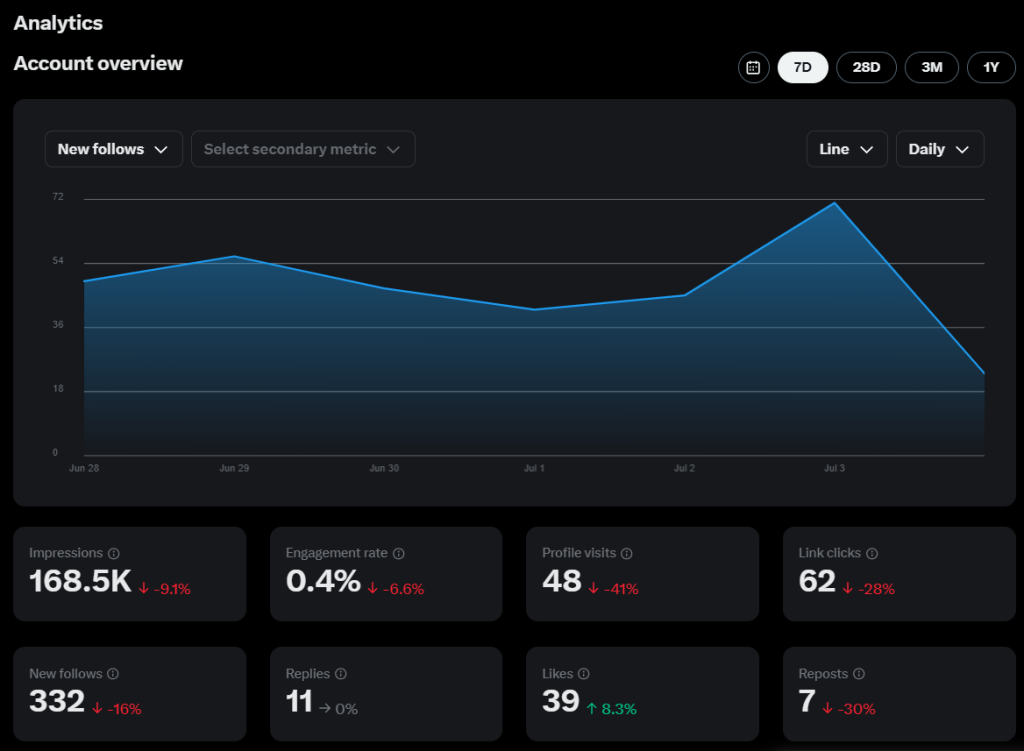
If you’re running Twitter Ads, you can also track conversions and campaign ROI. Tools like Metricool or Agorapulse can help you go deeper with analytics and competitor comparisons.
4. Integrate X with Support Software
If you get a lot of customer inquiries on Twitter, integrate it with CRM or support software like Zendesk or HubSpot. This helps your team manage DMs and mentions directly within your customer service dashboard.
You can also set up automated workflows that assign conversations to the right department—sales, marketing, or customer support. This ensures no message slips through the cracks.
5. Use the Twitter API
For developers or tech-savvy brands, the Twitter API (Application Programming Interface) opens the door to advanced automation. You can use it to track mentions, analyze conversations, and even automate tweets based on triggers.
For example, e-commerce brands can automatically tweet order updates or product drops. Creators can schedule AI-generated posts. The API gives businesses creative flexibility beyond basic posting.
6. Leverage AI and Automation
Artificial intelligence is transforming how businesses use social media. On Twitter, AI tools can analyze audience behavior, optimize tweet timing, and even generate content ideas.
You can use AI to:
- Write engaging posts with tools like ChatGPT or Jasper
- Schedule content automatically with platforms like Publer
- Analyze sentiment in customer feedback
- Personalize replies using smart bots
Automation saves time while keeping your brand active and responsive around the clock.
Best Practices to Make the Most of X (Twitter) for Business
Now that you’ve got your account and strategy set up, let’s talk about how to actually stand out. Twitter is a fast-paced platform—if you want to make an impact, you need to know the best practices that separate the pros from the rest.
Learn the Twitter Lingo and Terminology
Before diving into engagement, learn the basics. Terms like retweets, replies, hashtags, and mentions are essential. Understanding how threads and quote tweets work helps you use the platform more effectively and join conversations naturally.
Create a Branded Profile That Stands Out
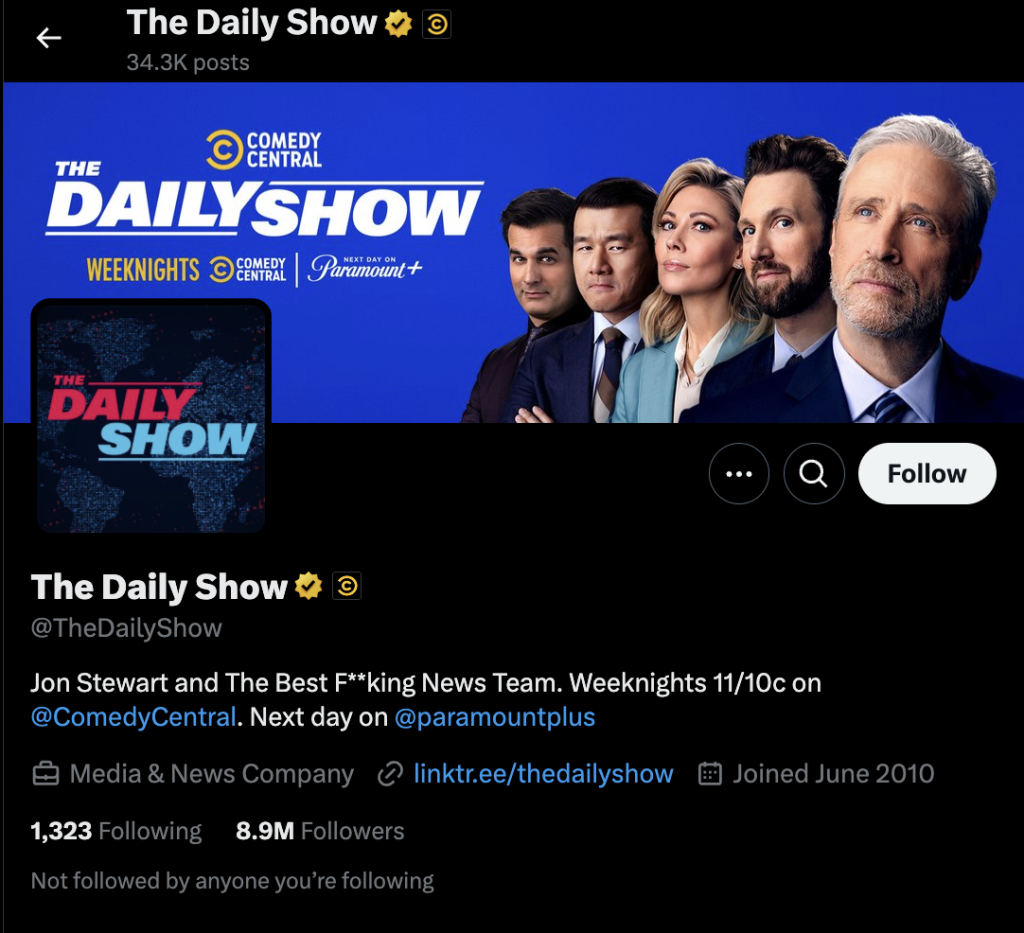
Your profile is the first impression people get of your business. Keep it clean, professional, and on-brand.
Use your logo as the profile picture, choose a header that reflects your mission, and keep your bio short but impactful. Add emojis or a branded hashtag if it fits your tone. A well-optimized profile can convert profile visits and get more Twitter followers instantly.
You can also pin tweets so that you can create a curated feed that highlights important posts or information related to your brand.
Use Your Brand Voice
Twitter is conversational. The most successful brands sound human, not corporate. Develop a brand voice that fits your identity, whether it’s witty, friendly, or educational, and stick with it.
For example, Wendy’s uses humor to engage fans, while Adobe focuses on inspiration and creativity. Your brand voice helps you stand out and keeps your audience coming back.
Engage with Users Regularly and in Real Time
Posting and leaving isn’t enough. The real magic of Twitter happens through engagement. Respond to mentions, join trending topics, and use polls or questions to encourage interaction.
When followers see that your brand replies to people, they’re more likely to engage themselves. Engagement increases visibility and builds trust faster than almost any other tactic.
Create Content That Engages Prospects and Customers
Content is the heart of Twitter marketing. Aim to create a mix of informative, entertaining, and promotional tweets. Knowing how to post on Twitter is key to any successful Twitter for business strategy.
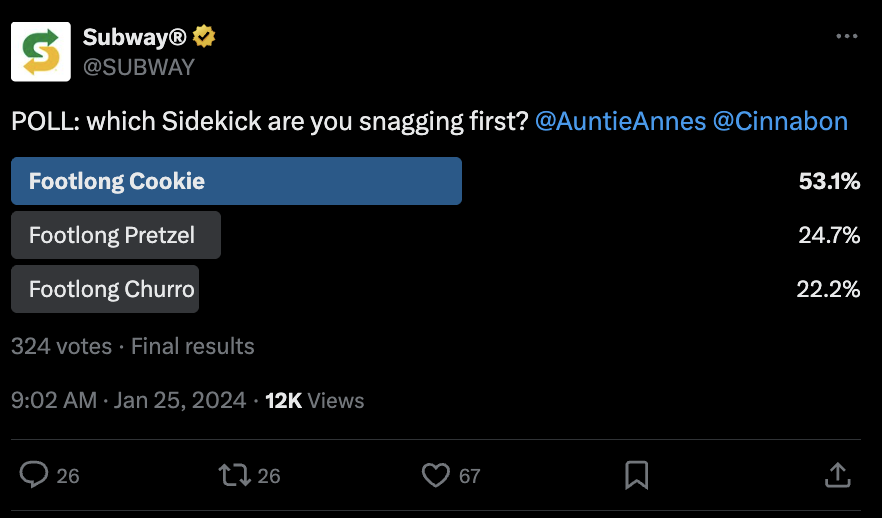
Some content ideas include:
- Product updates and announcements
- Tips or tutorials related to your niche
- User-generated content or testimonials
- Behind-the-scenes posts
- Polls, questions, or challenges
Short videos, GIFs, and visuals tend to perform best on the platform. Finding viral tweets can also help ensure your content is noteworthy and attracts more viewers.
Customize Your Feed with Lists
Twitter Lists are one of the most underrated features for businesses. You can group accounts by categories—like competitors, customers, influencers, or industry leaders—to stay organized and track trends easily.
Lists make it easier to engage with relevant people regularly, helping you grow your presence strategically.
Follow Established Accounts and Competitors
Follow top accounts in your industry to keep up with what’s trending. Analyze how they structure tweets, what time they post, and what kind of engagement they get.
Competitor analysis helps you spot opportunities for improvement and refine your strategy.
Get Verified
A verified account adds credibility. It signals to followers that your brand is authentic and trustworthy. Verification can also improve visibility in search results.
To apply, go to Settings > Verified > Apply. Make sure your account is active, has a clear bio, and uses a recognizable profile picture. You can then get approved and pay for your subscription.
Frequently Asked Questions

Can I Use Twitter for Business?
Yes! Twitter (X) is one of the most effective social media platforms for businesses to connect with audiences, build communities, and drive engagement.
How to Create a Twitter Account for Business?
Go to X.com, sign up using your business email, choose your handle, upload your logo, and complete your profile details.
What Is the Difference Between Personal and Business Twitter?
Personal accounts are for individuals, while business accounts are designed for brands. Business profiles have access to analytics, ads, and professional tools.
What Are the Disadvantages of Using Twitter for a Business?
It’s fast-paced and requires consistency. Brands that don’t post or engage regularly may get lost in the feed. Negative feedback can also spread quickly if not managed well.
What Is X (Twitter) for Business?
It’s the professional side of the X platform that helps businesses promote their products, engage audiences, and manage customer relationships.
Is X (Twitter) for Business Free?
Yes, creating and using a business account is free. However, ads and advanced analytics features are paid.
Is X (Twitter) Worth Using for Business?
Absolutely. It’s one of the best platforms for real-time engagement, community building, and brand awareness.
What Are the Benefits of a Business Account on Twitter?
Access to analytics, professional tools, ad campaigns, and customer service features—all designed to help brands grow faster.
What Is a Twitter Chatbot?
A Twitter chatbot is an automated tool that replies to DMs or mentions. Businesses use them for FAQs, lead generation, or quick customer support.
Final Thoughts
Using Twitter for business isn’t just about tweeting promotions—it’s about building a consistent, authentic presence that connects with real people.
With the right strategy, automation tools, and customer-focused mindset, X can become a cornerstone of your brand’s growth and monetization strategy.
The businesses that win on Twitter are the ones that listen, engage, and show up daily. So start small, stay consistent, and let your voice shape the conversation.


